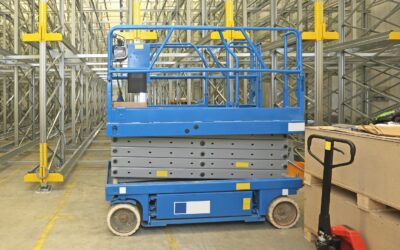Salmonella and mad cow disease were food crises the food industry could have done without. Since then, regulations governing the logistics of perishable products have been tightened in France, as well as at European and international level. The aim is toavoid all risks associated with the deterioration of goods requiring specific conservation conditions, such as foodstuffs and pharmaceutical products. So, what is temperature-controlled transport? What standards must it meet? And how do you ensure safe refrigerated delivery? Find the answers below...
Temperature-controlled transport: what is it?
Temperature-controlled transport is also known as "refrigerated transport". It refers to all the logistical means put in place to transport one or more products while maintaining a certain temperature throughout the journey. Whether positive or negative, this temperature must not vary from one end to the other, to ensure the proper preservation of the goods being transported. This is what is known as the "cold chain", and it's a vital factor in certain types of delivery.
Products requiring temperature-controlled shipping
Refrigerated transport involves products subject to rapid deterioration if certain storage conditions are not respected. In addition to temperature variations, they may be sensitive to atmospheric pressure or humidity levels. This type of merchandise can then lose its original properties and characteristics, and ultimately no longer be fit for consumption. These are essentially :
- Pharmaceutical products such as vaccines and plant extracts.
- Food products such as meat, fish and dairy products.
- Samples assigned to microbiological analysis.
- Reaction chemicals.
- Live plants and flowers.
- Alcoholic beverages.
The difference between refrigerated and frozen transport
Frozen transport is a special component of refrigerated transport. This type of delivery requires a temperature of -18°C or -20°C to be maintained throughout the journey. This calls for specific resources and skills, which is why it's so important to choose the right transport provider...
Respecting the cold chain: what devices and shipping methods are used?
Temperature-controlled products can be delivered by truck, train or plane. The fragility of these products imposes strict transport conditions that must be respected. These depend on the specific characteristics of the goods in question, and the distances involved.
Temperatures to be maintained throughout transport
Refrigeration logistics are highly complex, given the specific characteristics of each product. The temperatures that need to be maintained range from -20°C to +17°C. For example, frozen products must be kept at -18°C, ice cream at -20°C and fruit and vegetables at +8°C. Chocolate can be transported at +17°C, while wines require a temperature of +12°C.
Specific equipment
A diversified fleet and specific equipment are essential to guarantee temperature-controlled shipments, without any hassle for the carrier. The carrier must be able to carry out the operation regardless of product packaging: crate, pallet or carton. End-to-end temperature control is essential throughout the logistics chain. To achieve this, the means of transport assigned to this type of operation must be equipped with sensors. These enable storage conditions to be recorded throughout the journey.
Teams trained to respect the cold chain
In addition to ensuring temperature traceability, refrigerated transporters are required to train their teams in handling high-risk products. Handling pallets of pharmaceutical products, for example, requires special expertise and know-how. Hygiene rules are also a crucial element in guaranteeing the safety of certain goods, such as food products. So you need to make sure that all these conditions are met before entrusting your products to a temperature-controlled transport service provider.
D&figroupe puts a wide network of transport partners at your disposal. This enables us to guarantee highly secure transport, whatever the characteristics of your products and the conditions under which they are to be transported. Our many years of experience and the constant monitoring carried out by our teams of experts guarantee strict compliance with national, European and global regulations.
Regulations: how is refrigerated transport regulated at national, European and international level?
To avoid any kind of health catastrophe, strict rules have been imposed on the logistics of high-risk products. Temperature-controlled transport is subject to two main regulations.
1. The HACCP Plan
Hazard Analysis Critical Control Points (HACCP) is the French acronym for Hazard Analysis Critical Control Point. It is a plan derived from the Hygiene Package, a group of European standards designed to ensure the safety of food and feed products.
The aim of the HACCP plan is to identify, assess and control risks relating to foodstuffs. All establishments using perishable products are required to set up an HACCP program. This is based on 7 key principles:
- Analyze hazards.
- Identify critical control points.
- Set a critical threshold for each control point.
- Establish a control system for each critical point.
- Establish the necessary corrective measures for each risk situation identified.
- Check that the HACCP plan has been validated, ensuring that equipment is working properly and that staff have been trained.
- Record and archive all procedures and operating modes.
2. ATP regulations
The ATP regulations (Agreement on the Transport of Perishable Foodstuffs) define the standards to be met by means of transport for perishable products. Established by the United Nations, it has been signed by 48 countries, including France. In particular, this international agreement lays down the temperatures that must be maintained in transported crates.
The ATP certificate of technical conformity is issued in France by Cemafroid (the French cold chain center of expertise). This certificate exists in 4 different types: refrigerated, refrigerant, isothermal and calorific. Every vehicle transporting perishable goods must be in possession of this document, depending on its characteristics.
Managing the risks of cold transport: how can you ensure flawless delivery to your customers?
From importing seafood from overseas to delivering vaccines to city-center pharmacies, temperature-controlled transport is a complex business. There are so many variables to take into account that it requires specific skills and know-how. To ensure that your perishable goods arrive at their destination without loss or damage, your carrier must respect its own storage conditions (temperature, humidity, etc.) and delivery deadlines. He must also avoid changing modes of transport and take into account the customs requirements of each country.
D&figroupe benefits from an extensive network of logistics platforms and transport fleets on a national, European and international scale. You can count on the expertise and responsiveness of a single contact person in our customer service department. His role is to ensure continuous monitoring of your operation, so as to react quickly to the slightest anomaly. Last but not least, our customs service, with offices in over 200 countries, guarantees that we will take full responsibility for your international operations.
Sources :





0 comments